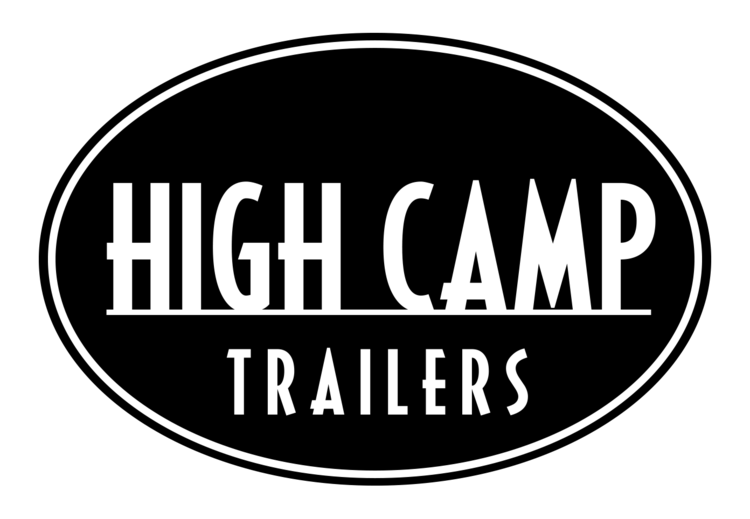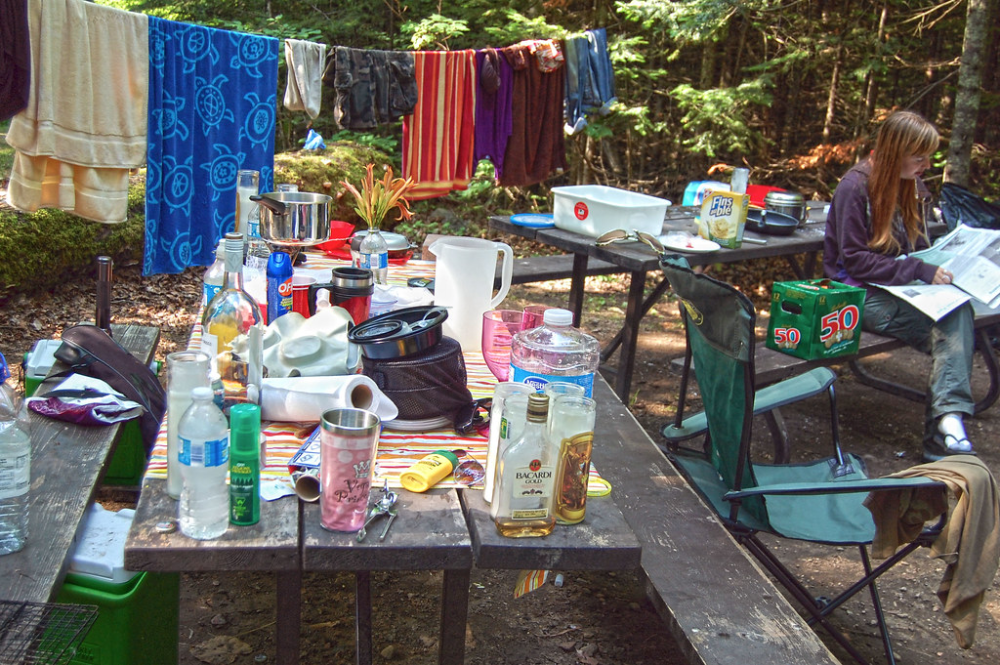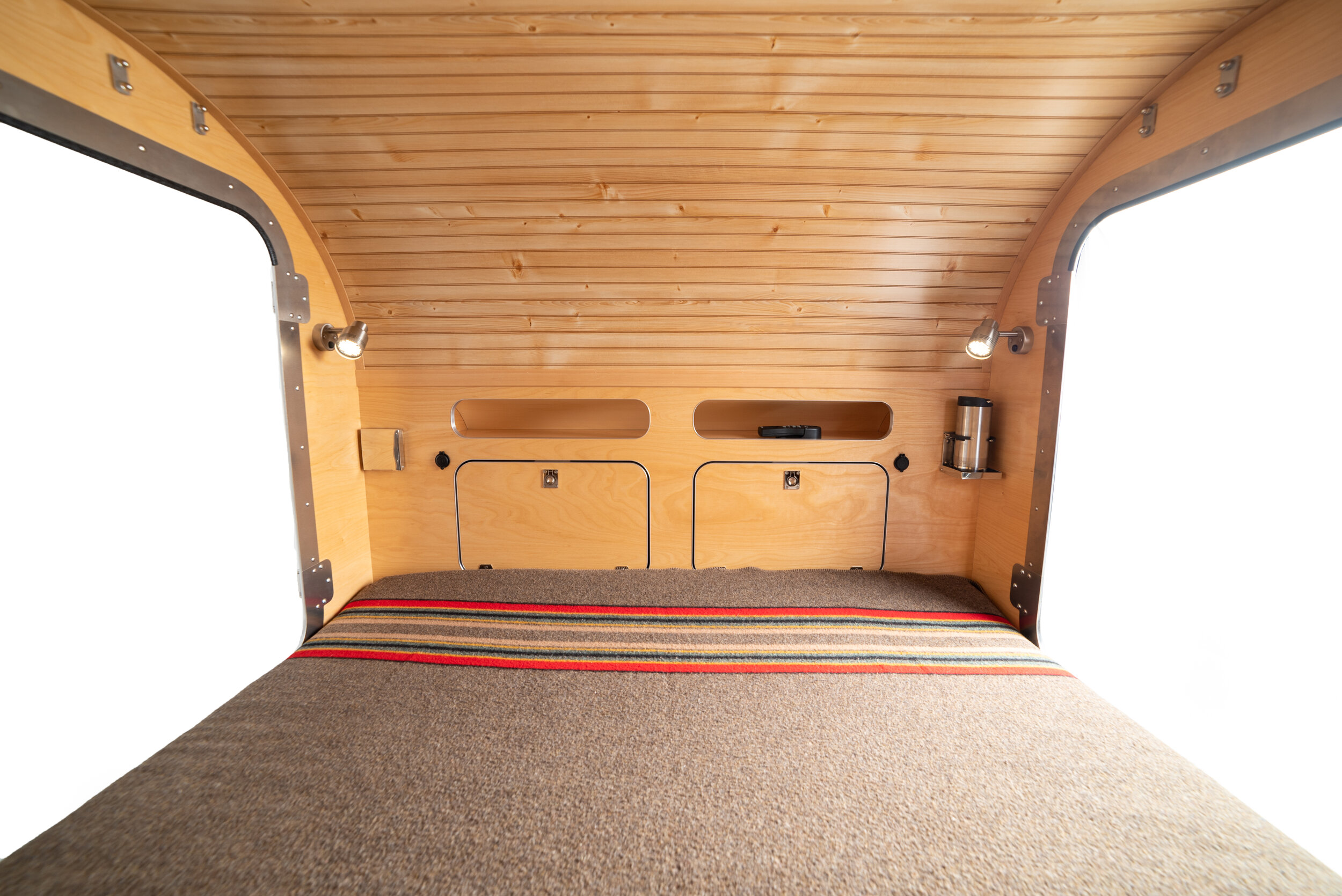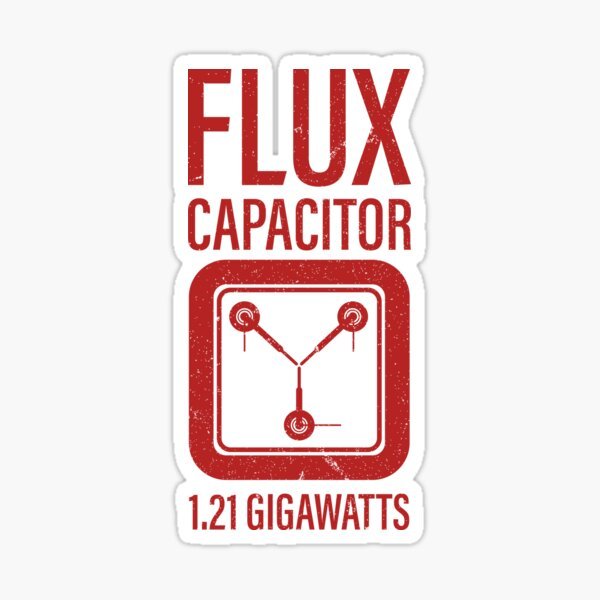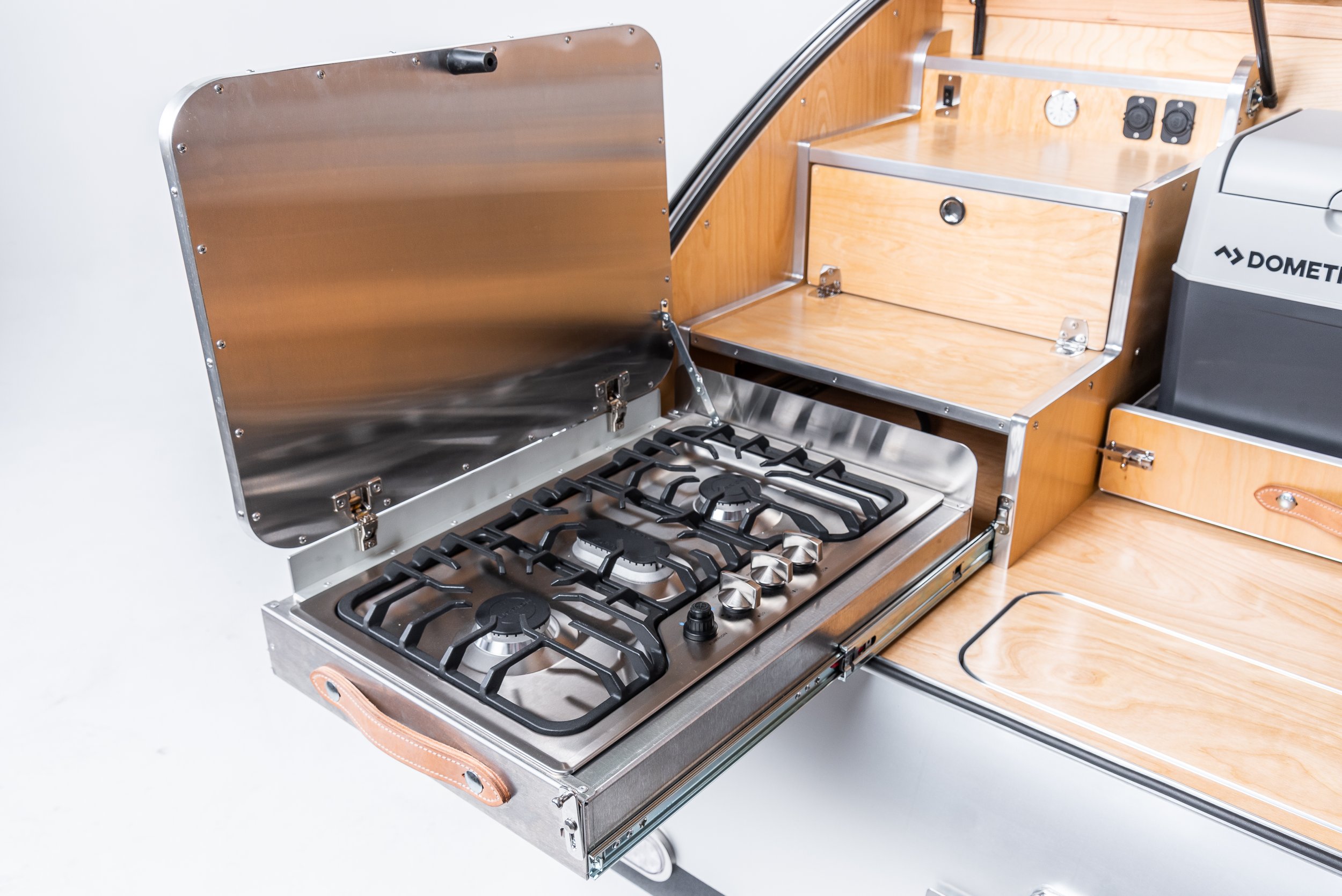A High Camp teardrop camper features an onboard electrical system that provides power for all needs. You can select a battery capacity to match your camping style, whether you are a weekend warrior or a multi-week boondocker looking for self-sufficient solitude.
Our power center supplies interior and exterior lights, runs the Maxxair roof fan, galley refrigerator, and charges your electronic devices, including flashlights, phones, GPS units, laptops, and even CPAP machines.
Charging ports are found in the cabin and galley kitchen, and there are even external 12-volt hookups on each sidewall for awning lights or other exterior lighting. Finally, the camping trailer comes wired with a charging port for solar panels, meaning you can rest assured that you’ll have the power you need when you need it.
